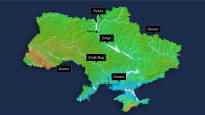The invasion of Ukraine has now continued for another week, and ground forces are approaching Kiev. Russia has failed to defeat the resistance of the Ukrainians.
Why has Russia not used stronger force in the fighting?
This is asked by the specialist researcher and lieutenant colonel who argued about the change in Russia’s military strategy. Pentti Forsström About the National Defense College.
– Has we been given an over-optimistic picture of Russia’s military capability? Is there a well-trained and equipped military there or is this a bubble? This is one option that needs to be explored, Forsström says.
The situation in the Ukrainian capital Kiev is difficult, but under control, the mayor Vitali Klitschko said Thursday. The matter was reported by Reuters. At night, among others BBC (switch to another service)reports explosions in the city. According to Klitschko, the explosions were the result of Ukraine’s air defense.
In talks between Russia and Ukraine on 3 March, the countries agreed to create humanitarian corridors that could be used to evacuate civilians. I was told about this by an adviser to the President of Ukraine Mykhailo Podolyak On Twitter (switching to another service). Podolyak said that the third talks will be held next week.
The ceasefire was one of the goals of the negotiations, but it could not be agreed. Forsström estimates before the end of the talks that if there is no ceasefire, Russia will increase its deadly force in the fighting.
– To date, not all military cards have been dealt to the table, Forsström says.
According to the specialist, Russia has not yet carried out a ground attack, in which the resistance is first paralyzed by firepower and only then will the attackers advance to the target. For example, according to Försström, the much-talked-about 64-kilometer column may now be waiting for instructions to carry out such an attack.
Likewise, the role of the Air Force, according to the specialist researcher, has been still modest in supporting the Air Force attack. According to Forsström, air strikes have been largely separate events that have sought to affect the civilian population and cause panic.
– The Air Force has been used, but not to the extent that could be expected based on their capacity. Why not? Here is the big question that has no answer, Forsström says.
Russia’s caution in the fighting may also be due to the fact that it is difficult to attack its fraternal people. When Slavic civilians are being confronted in the conquered targets, it is difficult for the soldier to press the trigger, Forsström estimates.
According to Forsström, there are young soldiers in Russian troops who do not have the same training as experienced professional soldiers. Russia has conscripts twice a year, and some conscripts continue on wage agreements after conscription.
– I have no doubt that there will be fugitives and surrender, such as leaving guns and putting gloves on the counter, Forsström says.
The specialist does not believe that Russia will be able to take over the whole of Ukraine, because the country is home to 40 million people.
– Possession of such is quite a question.
The fact that there are 15 cities in Ukraine with a larger population than Espoo already shows the number of people.
Let us then look at the circumstances in which war is being waged in Ukraine. Geography helps defending Ukraine.
Of particular strategic interest is the large marshland north of Ukraine, where heavy vehicles are easily trapped in the moist soil.
In the icy winter, the Pinsk swamps would be able to travel by road to Ukraine without the bottlenecks forming for you, said US war experts To the Washington Post (you switch to another service) even before the attack.
In the usual winter, the Pinsk marshland has had time to accumulate ice since December, and that’s why U.S. experts were expecting an attack just in February.
However, Pentti Forsström, a specialist researcher at the National Defense University, says that the frostbite of the country does not have a significant strategic impact on Russian movements. An armored car can drive 70 centimeters deep on ice, but the truck may not follow suit: the surface area of the armored roller is large, meaning the surface pressure is low relative to the truck.
In addition, according to Forsström, moving in a wetland with a tanker always requires a preliminary examination.
– The guys have to go drilling ahead, and to my knowledge, Russia hasn’t done that. If the tank sinks, it’s there on the tray to shoot. It is not raised at all.
You can discuss 5.3. until 11 p.m.
